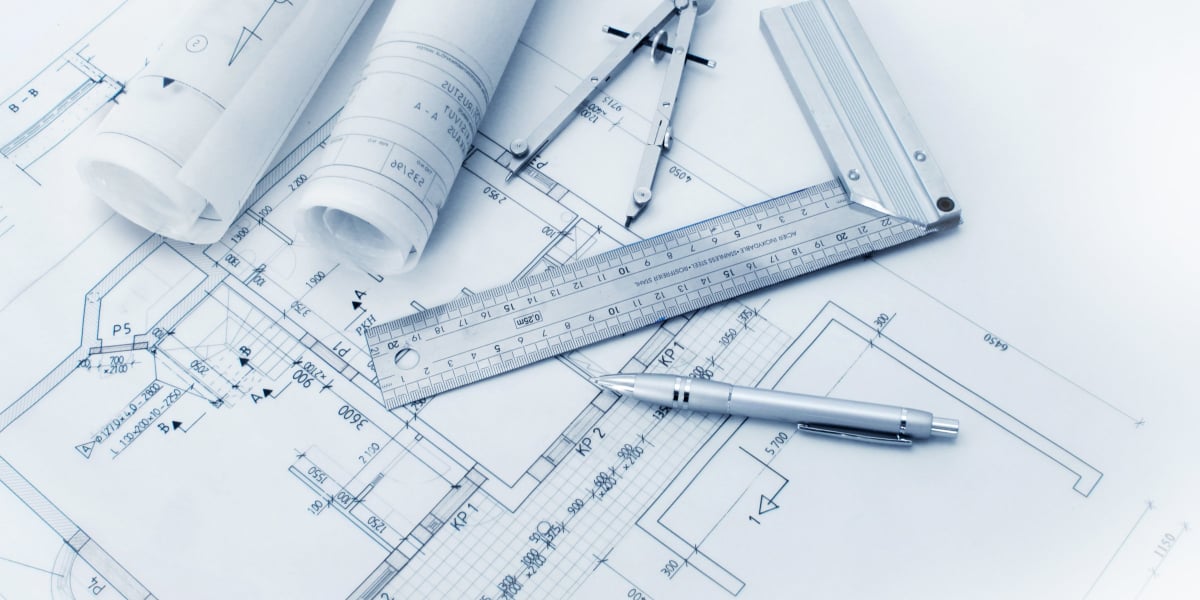4 Important Things to Remember When Designing a New Home
Making the decision to design a new home is as exciting as it can be scary. If you’ve never had any experience designing a home or planning a construction project before, you may be feeling overwhelmed at the sheer number of things you need to decide before construction can start.
Basic decisions such as number of bedrooms and bathrooms, style, and how big to make the kitchen are typical things that don’t get easily overlooked in the planning process.
However, there are some considerations that may not be as obvious to every homeowner getting ready to plan a new build. Here are 4 important things to keep in mind when planning your new home:
Site Conditions
All land is not created equal, especially when you’re talking about building a safe home that will hold your family and all your belongings.
To avoid additional construction costs and frustration, you need to fully understand the land you’ve chosen and its possible impact on your construction abilities and your budget.
Flat land is going to be much easier and less expensive to develop, for example. You can still go for that plot with a sloping hill, but understand it may require more in excavation and building costs.
Soil conditions also have a big impact on whether or not your plot of land will be able to support the home you intend to build. Consider having a soil test done on any plots of land you’re seriously considering before you finalize the sale.
Finally, local weather conditions may also determine where it’s best to build your home. If you’re in an area prone to high winds, for example, you may need to add landscaping that serves as a windbreak to protect your home from damage. Or, if you’re in an area that’s prone to flooding, you may need to take special precautions with your home’s design and the drainage of your lawn to prevent water from entering your new home.
Room Orientation
You likely have thought about how many rooms you plan to build in your home, but what about the physical locations of those rooms?
Depending on where in your home a room is located, it can make a big difference to how much it needs to be heated and cooled, as well as how likely you are to want to spend time in it.
If, for example, your living room faces south, the hot afternoon sun could make it unbearable to sit and relax during summer evenings.
Instead, carefully choosing how rooms are oriented – with the input of an architect – can go a long way toward giving you a nice, cozy bedroom to wake up in every morning and a bedroom that’s freezing cold and dark all winter long.
Open or Closed?
Open plan layouts have become increasingly popular in home design over the past few decades, but they aren’t without drawbacks.
If you prefer some peace and quiet, as well as privacy, an open floor plan might not be for you. All those big spaces and lack of walls between rooms means that sound can easily travel from one end of the house to the other, making it difficult to whisper about plans for a surprise vacation, for example.
But an open floor plan isn’t without its positive points.
Light flows more easily from room to room, decreasing the need for interior lighting and extra windows. An open floor plan also brings a harmony to the home and looks more aesthetically pleasing, a big bonus for if you ever decide to sell the home.
If you like open floor plans but want to preserve some privacy and decrease noise, consider adding a few extra doorways and walls than you may have originally planned in.
Your Family’s Needs
The needs of your family in the home goes beyond the number of bedrooms and bathrooms and the size of the kitchen.
If you have young children who will want to play outside, for example, be sure that you create a safe, comfortable area near the house for a playset or other outdoor toys. Check that it will be in shade at least part of the day, preferably during the hottest hours of the afternoon, so your children aren’t going to be driven indoors from their fun by the glaring sun.
Also, think about what sorts of spaces your children may need as they get older. Are you going to want a group of teens hanging out in your main living room when you’re trying to have a little peace and quiet? Building a rec room or game room in the basement is a great way to give older children some common space for their friends to come over without encroaching on the family as a whole.
Expert Home Design & Building in MD & PA
For more than 30 years, Irvine Construction has provided exceptional design-build services, as well as high-end home renovations, to homeowners throughout Maryland and Pennsylvania. Our skilled team can take your dreams and make them a reality! Schedule a consultation today!
